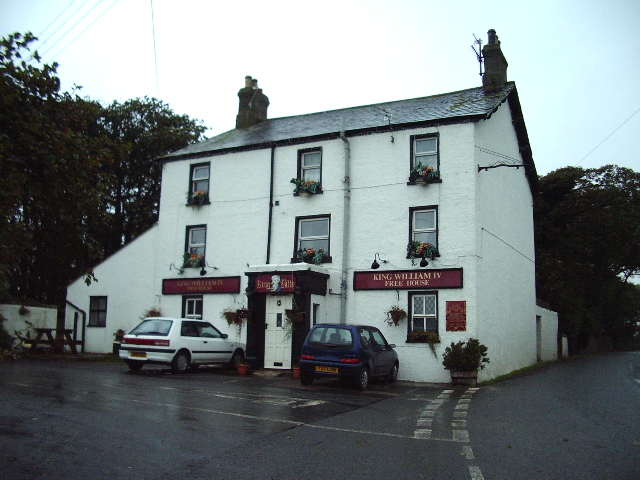Topics > Civil Parishes in Cumbria > Millom Town Council Area > Chapel Sucken
Chapel Sucken
Chapel Sucken was a township in the old county of Cumberland - but the place name does not appear on modern maps.
CHAPEL-SUCKEN, a township, in the parish of Millom, union of Bootle, Allerdale ward above Derwent, W. division of Cumberland, 12 miles (S.E. by S.) from Ravenglass; containing 214 inhabitants.
Extract from: A Topographical Dictionary of England comprising the several counties, cities, boroughs, corporate and market towns, parishes, and townships..... 7th Edition, by Samuel Lewis, London, 1848.
Chapel Sucken, with Kirksanton, forms a township, containing a few houses and scattered farms, and is 1 ¼ miles from Silecroft station on the Furness railway, 6 south-east from Bootle, and 9 south-west from Broughton (Lancs). Christ Church, a chapel of ease, to Holy Trinity, erected in 1891 at a cost of £1,050, is an edifice in the Gothic style, consisting of chancel, nave, north porch and a western bell-gable with one bell, and will seat 128 persons. At Lacra, an ancient estate here, on the summit of a hill 500 feet above the level of the sea, is "Old Kirk," an oblong area, 50 by 25 feet, originally surrounded by upright shafts about 6 feet in height and encompassed by a dyke; only the bases of a few stones now remain; the fosse may be traced on the west side; here are also two incomplete stone circles. About ½ a mile west, near the shore, is the "Giant’s Grave," which consists of two huge lichen-covered monoliths, one 110 and the other 8 feet in height, and standing 15 feet apart; in the former is an ancient circular hollow or "cup-mark." The Croft, Kirksanton, within about a mile of Black Combe, is the seat of J.W. Brookland esq. proprietor of the Bank Springs brewery. Mr. Brockbank is also largely connected with the iron trade of West Cumberland, being a director of various important companies, and is also a large landowner and the proprietor of rovalties in the district. W. and G. Myers esqs. and W. Brockbank esq. are the principal landed proprietors. The chief crops are barley, oats and pasture land.
Extract from: Kelly's Directory of Cumberland, 1897

Co-Curate Page
Kirksanton
- Overview About Kirksanton Map Street View Kirksanton is a village on the A5093 road, in the Copeland district, in the county of Cumbria, England. Nearby settlements include the town …









